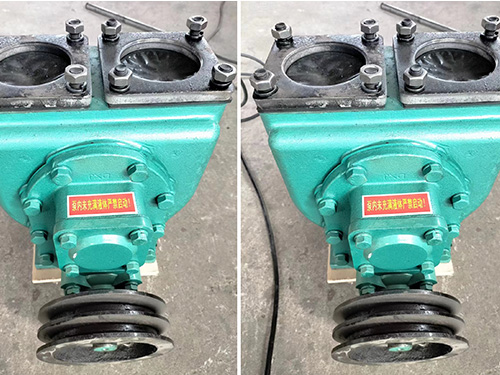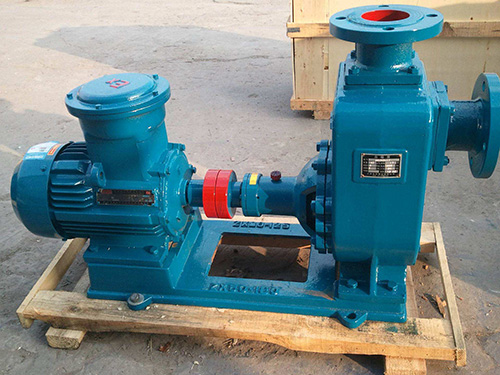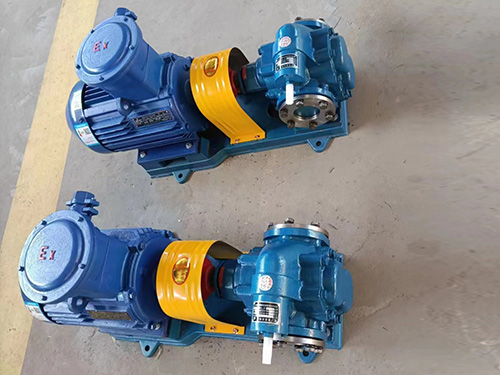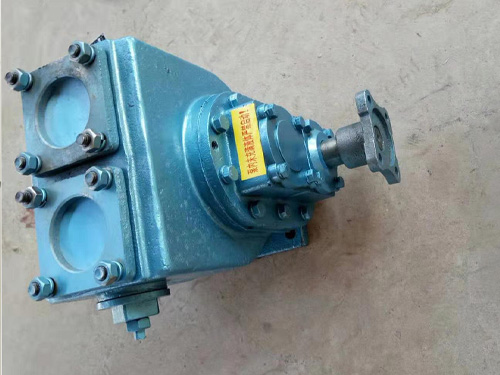Common problems when using Roots pumps and how to avoid them
2019-03-05 16:17:58
Roots pumps need to operate at a pure volume level, and compared to rotary vane vacuum pumps, Roots pumps do not have internal compression function. It can compress the exhaust pressure. Compared to rotary vane vacuum pumps, all components in contact with the medium are oil-free, and all components suitable for Roots pumps are also suitable for dry vacuum pumps. Its characteristics are compact structure and high pump speed
1. Operating under High Pressure
For Roots pumps operating under high differential pressure, it is not recommended to operate them directly under high pressure before cooling them down.
. Under high pressure, due to the rapid speed of the vacuum pump, small or zero gas flow will not dissipate any heat through the gas or the surface of the casing. Due to the sudden increase in temperature, the air gap between the rotor and the casing is too small, and the pump will stop rotating. In severe cases, this can lead to the failure of the vacuum pump2. Improper Temperature Fluctuations
While the Roots pump plug is still very hot, a sudden and significant drop in ambient temperature will cause the pump casing to shrink, causing the pump to stop rotating.
. This is particularly important when working under high pressure. Therefore, avoid sudden changes in ambient temperature. In addition, operators should be careful not to suddenly open nearby blinds, other doors, etc., especially in winter Additionally, for those self-supporting pumps, they should be placed under eaves or canopies to prevent them from being exposed to rain. If water is directed directly at the pump during a fire, the pump casing may explode, especially those made of gray cast iron that are prone to explosion. The ductile iron version of the pump is suitable for withstanding such thermal fluctuations due to its relatively large material3. Temperature Control
If the Roots pump is operated at its large differential pressure, a temperature sensor needs to be installed at the exhaust end to prevent overheating and any resulting damage.
. This will generate an alarm at a limited temperature, and when it reaches a higher allowable temperature, the pump will be shut down4. Evacuation
In applications, a few seconds of extraction cycle is achieved, so the operator needs a ratio of 1:2 between the Roots pump and the front stage pump.
. This ratio is very important because the front stage pump pumps out air at a pressure of 100 hPa, taking up most of the pumping time, while the Roots pump only needs to operate at a pressure starting from 10 hPa. Therefore, it is believed that the size of the front stage pump should be correspondingly larger5. Starting the Pump
If a multi-stage pumping station or a combination of multiple parallel operated vacuum pumps are used, these pumps can be started at staggered intervals. The first thing to start is the atmospheric pump, which can avoid excessive power peaks and protect high cost circuit breakers.
. This can be easily achieved in controllers and PLCs through timing components. Another method is to use a frequency converter and slowly start the pump6. Liquid intrusion
Sudden liquid intrusion can damage the pump because during rapid cooling, the gas cannot reach the required temperature to evaporate the liquid.
. The additional steam cannot be pumped out in time because the front stage pump is already overloaded and the front stage pressure may rise to an excessively high level. To prevent this situation from happening, a receiver is installed between the processing room and the Roots pump to allow the liquid to be absorbed before entering the pump7. Dust Accumulation
In processes that generate particles or carry dust, such as metallurgy or crystallization, a dust filter is installed at the inlet of the pump to protect the Roots pump and downstream pumps.
. A so-called debris protection net should be installed at the inlet of the Roots pump to prevent large solid substances and welding beads from being ejected from the welded joint due to improper cleaning during the first use of the system. In this case, it is recommended to use accessories from the pump manufacturer, as a debris protection net has been designed to match its free section with the nominal diameter of the pump, ensuring that the pump speed is not affected by unexpected electrical conductivity losses8. Extracting valuable gases
When extracting valuable and high-purity gases, such as helium 3 or helium 4, avoid these gases coming into contact with the surrounding air.
. At this point, the pump body is required to have high airtightness and low leakage rate in areas below 10-5 to 10-8 hPa l/s. Some vacuum pump manufacturers, such as Pufa Vacuum, can provide permanent magnet couplings to replace ordinary shaft feed through components for motors. This makes all leaks on the shaft seal rings a thing of the past. Closed motors can also be used, but operators rely on the pump manufacturer for maintenance, as these closed motors are specifically designed for the pump. For example, using magnetic coupling technology, cost-effective standard motors can be used
The YHCB high flow pump has the characteristics of large flow rate, high head, small settli...

The CYZ centrifugal pump adopts an axial return liquid pump body structure, which is compos...

Copper gear pump (KCB type) is suitable for conveying lubricating oil or other liquids with...

The car mounted circular arc gear pump can be installed on the car and driven by the output...



